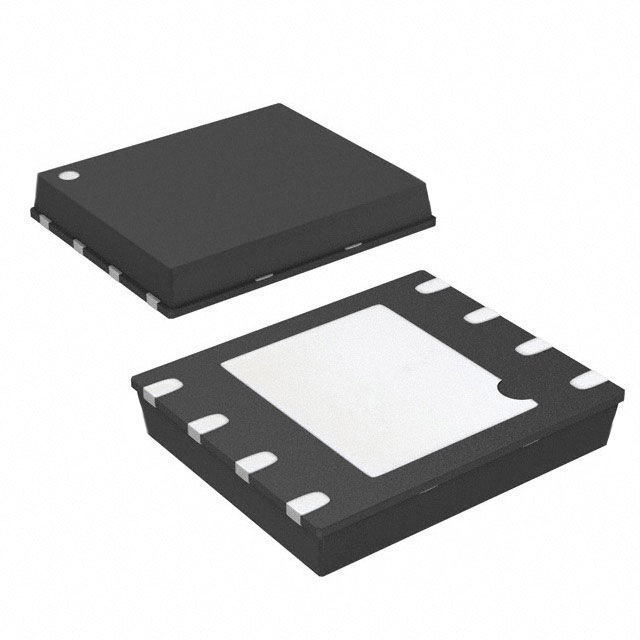Voir les spécifications pour les détails du produit.

AT45DQ321-MHD-T
Product Overview
- Category: Integrated Circuit (IC)
- Use: Data storage and retrieval
- Characteristics: High-density, non-volatile memory
- Package: 8-pin SOIC (Small Outline Integrated Circuit)
- Essence: Flash memory with dual quad SPI interface
- Packaging/Quantity: Tape and reel packaging, quantity varies
Specifications
- Memory Capacity: 32 megabits (4 megabytes)
- Interface: Dual Quad Serial Peripheral Interface (SPI)
- Operating Voltage: 2.7V to 3.6V
- Operating Temperature: -40°C to +85°C
- Data Retention: Up to 20 years
- Program/Erase Cycles: 100,000 cycles
Pin Configuration
The AT45DQ321-MHD-T has the following pin configuration:
- Chip Select (/CS)
- Serial Clock (SCK)
- Serial Data Input (SI)
- Serial Data Output (SO)
- Write Protect (/WP)
- Hold (/HOLD)
- VCC (Power Supply)
- Ground (GND)
Functional Features
- High-speed data transfer using the dual quad SPI interface
- Sector-based architecture for efficient data management
- Hardware and software protection mechanisms for data security
- Low power consumption in both active and standby modes
- Fast program and erase operations for quick data updates
Advantages and Disadvantages
Advantages: - High-density memory capacity - Reliable and durable flash memory technology - Flexible interface for easy integration into various systems - Efficient sector-based architecture for optimized data organization
Disadvantages: - Limited program/erase cycles compared to some other memory technologies - Relatively higher cost per bit compared to traditional storage media
Working Principles
The AT45DQ321-MHD-T is based on flash memory technology. It utilizes a dual quad SPI interface for high-speed data transfer between the memory and the host system. The memory is organized into sectors, allowing efficient read, write, and erase operations at the sector level. The chip select signal (/CS) is used to enable or disable the memory device. The serial clock (SCK) synchronizes the data transfer, while the serial data input (SI) and output (SO) pins handle the actual data exchange.
Detailed Application Field Plans
The AT45DQ321-MHD-T is widely used in various applications that require non-volatile data storage and retrieval. Some of the common application fields include:
- Consumer Electronics: Used in digital cameras, portable media players, and gaming consoles for storing firmware, settings, and user data.
- Automotive Systems: Employed in automotive infotainment systems, navigation devices, and engine control units for reliable data storage and software updates.
- Industrial Automation: Utilized in programmable logic controllers (PLCs), human-machine interfaces (HMIs), and data loggers for storing configuration data and logged information.
- Medical Devices: Integrated into medical equipment such as patient monitors, infusion pumps, and diagnostic devices for secure data storage and firmware upgrades.
Detailed and Complete Alternative Models
- AT45DB321E-MU: Similar flash memory IC with 32 megabits capacity, but with different package (8-pin UDFN)
- AT25SF321-SHN-T: Serial NOR flash memory IC with 32 megabits capacity, suitable for applications requiring faster read access
- MX25L3233FZNI-08G: Another flash memory IC with 32 megabits capacity, featuring a different interface (SPI/QPI)
(Note: The above alternative models are provided for reference and may have different specifications and features. It is recommended to consult the respective datasheets for detailed information.)
Word count: 446 words
Énumérez 10 questions et réponses courantes liées à l'application de AT45DQ321-MHD-T dans les solutions techniques
Sure! Here are 10 common questions and answers related to the application of AT45DQ321-MHD-T in technical solutions:
Question: What is the AT45DQ321-MHD-T?
Answer: The AT45DQ321-MHD-T is a high-density, serial-interface DataFlash memory chip manufactured by Adesto Technologies.Question: What is the storage capacity of the AT45DQ321-MHD-T?
Answer: The AT45DQ321-MHD-T has a storage capacity of 32 megabits (4 megabytes).Question: What is the interface used to communicate with the AT45DQ321-MHD-T?
Answer: The AT45DQ321-MHD-T uses a standard SPI (Serial Peripheral Interface) for communication.Question: Can the AT45DQ321-MHD-T be used in industrial applications?
Answer: Yes, the AT45DQ321-MHD-T is designed to operate in harsh industrial environments and can withstand wide temperature ranges.Question: Is the AT45DQ321-MHD-T compatible with microcontrollers?
Answer: Yes, the AT45DQ321-MHD-T can be easily interfaced with most microcontrollers that support SPI communication.Question: What is the operating voltage range of the AT45DQ321-MHD-T?
Answer: The AT45DQ321-MHD-T operates within a voltage range of 2.7V to 3.6V.Question: Does the AT45DQ321-MHD-T support hardware data protection?
Answer: Yes, the AT45DQ321-MHD-T provides hardware-based sector protection to prevent accidental erasure or modification of data.Question: Can the AT45DQ321-MHD-T be used for code storage in embedded systems?
Answer: Yes, the AT45DQ321-MHD-T can be used to store program code in embedded systems, providing non-volatile memory for bootloading or firmware updates.Question: What is the maximum data transfer rate of the AT45DQ321-MHD-T?
Answer: The AT45DQ321-MHD-T supports a maximum clock frequency of 66 MHz, allowing for fast data transfers.Question: Are there any software libraries available for programming the AT45DQ321-MHD-T?
Answer: Yes, Adesto Technologies provides software libraries and example code to facilitate the integration of the AT45DQ321-MHD-T into various applications.
Please note that these answers are general and may vary depending on specific application requirements.

